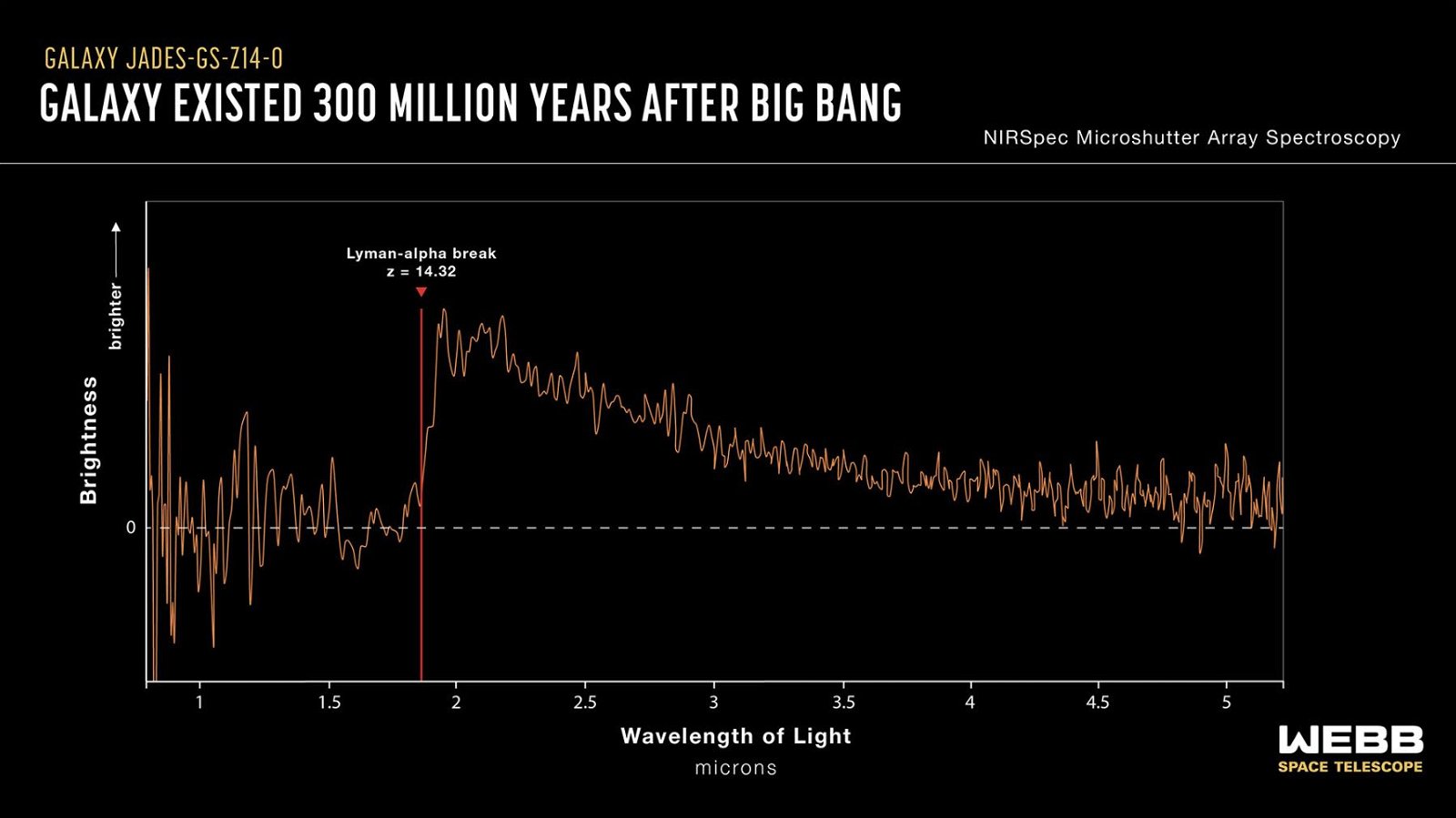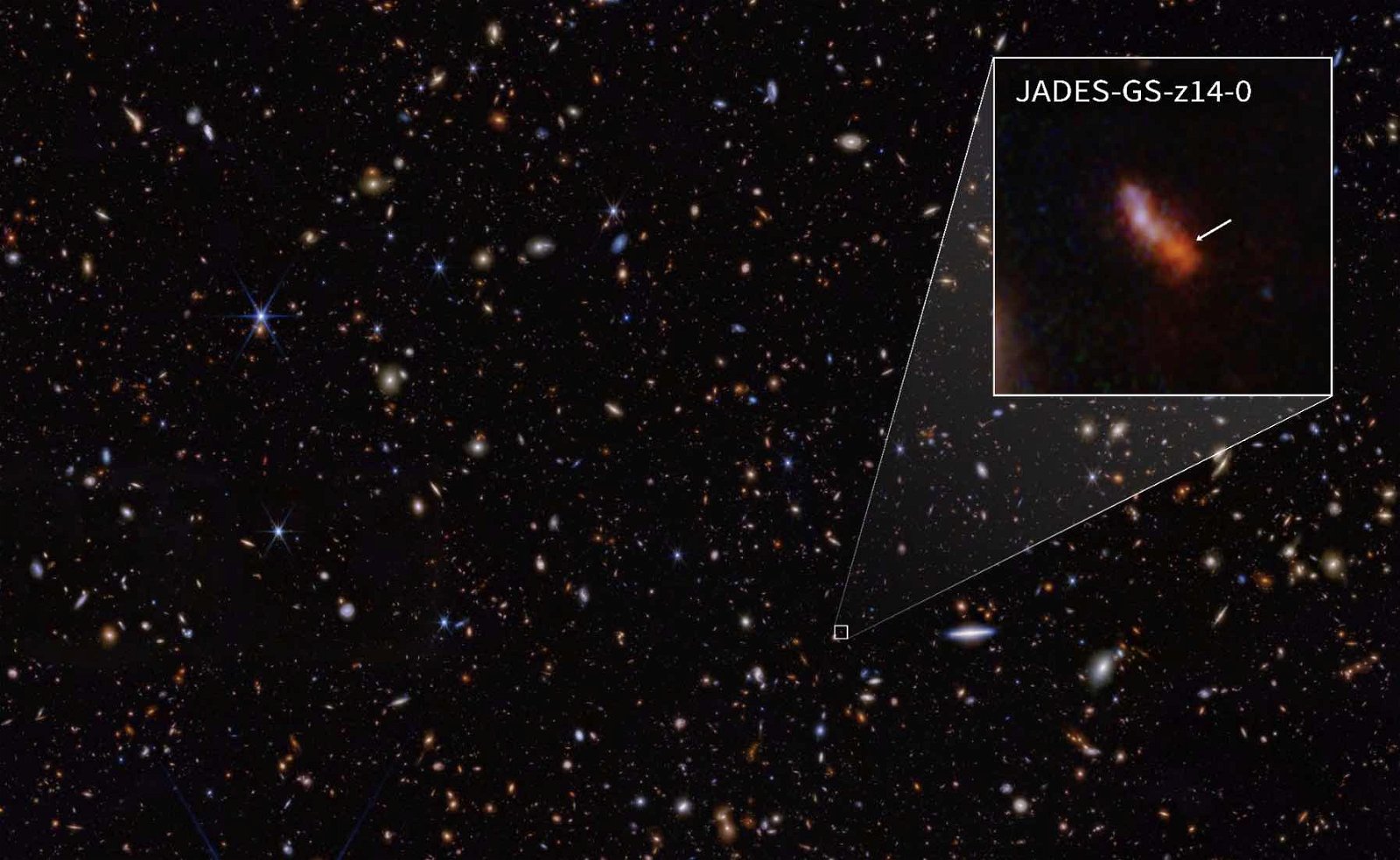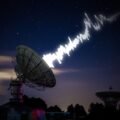Astronomers have discovered a pair of extremely distant celestial objects with help from NASA’s James Webb Space Telescope (JWST), one of which is believed to be the earliest known galaxy detected.
Dubbed JADES-GS-z14-0 and JADES-GS-z14-1, these distant galaxies were revealed during the JWST Advanced Deep Extragalactic Survey (JADES) campaigns and may provide astronomers with crucial new insights into some of the earliest galaxies that formed in our universe.
Significantly, the new findings also challenge past assumptions about these formation processes, a trend that has continued since Webb first began operating.
Using the telescope’s NIRSpec instrument during observations of three candidate galaxies at redshifts greater than 14, the research team involved with the study was able to perform deep measurements of the spectra generated from interactions between matter and radiation in these ancient star systems.
Selected from observations in a region of the Fornax constellation identified within the Great Observatories Origins Deep Survey (GOODS) south field, this grouping of galaxies was initially identified by the Hubble Space Telescope and Cycle 1 JWST/NIRCam data, which at the time pointed to a less than 1% chance that they were low-redshift “interlopers.”
Of the two galaxies, JADES-GS-z14-0 is the brightest and was found near a foreground galaxy, which introduced some initial complications in the team’s assessments. With time, Webb’s NIRCam observations of the region helped to dismiss the possibility of this premise, thanks to “additional deep medium-band NIRCam observations that substantially strengthened the case for the source being at high redshift,” the authors write in a new paper detailing their findings.


Detailed spectroscopy helped the team affirm the presence of a spectral line of hydrogen known as the Lyman-α break, placing the galaxies at redshifts of approximately 14.
After Webb’s NIRSpec camera also revealed that the faintest of the candidate galaxies had not been significantly detected, the team shifted their attention to JADES-GS-z14-0 and JADES-GS-z14-1, galaxies whose spectra showed a clear flux density break. This information also helped the team to confirm the high redshift of these galaxies.
Ultimately, redshifts of 14.32 for JADES-GS-z14-0 and 13.90 for JADES-GS-z14-1 were determined, revealing spectrographic signatures suggestive of very young stars and relatively low dust in these galaxies, which astronomers recognize as being traits associated with the early universe.
Additionally, JADES-GS-z14-0 appears to display a pronounced distribution of ultraviolet (UV) light when compared with other very bright galaxies, likely due to its size. The team says this points to a spatially extended stellar population, as opposed to a dominant active galactic nucleus (AGN), denoting the small region near the heart of many galaxies which is brighter than astronomers would expect to result from the luminosity of stars alone.
In some cases, the high luminosity of this central region can overpower the rest of the light generated by such galaxies. However, in the case of JADES-GS-z14-1’s UV emissions, the team involved with the new study says they appear to point to stellar rather than AGN dominance.
Another significant finding is that the masses of these galaxies appear to have grown rapidly from redshift 20 to 14, which is also suggestive of early star formation activity. This, along with the relatively low dust present in these galaxies, is believed to originate from a few possible factors that may include galactic outflows.
Ultimately, the discovery of these very early galaxies is providing compelling new data that points to the much earlier existence of these massive galaxies than many astronomers previously thought, although that isn’t to say that no one had expected such discoveries.
Still, such ongoing discoveries, made in large part with the help of the JWST, fundamentally support the reality that our existing notions about galaxy formation require a bit more work. With ongoing observations of the most distant and early regions of our universe, astronomers hope to deepen our understanding of the ‘Cosmic Dawn,’ where the first galaxies were born, in the years ahead.
The team’s new paper, “A shining cosmic dawn: spectroscopic confirmation of two luminous galaxies at z ∼14,” was uploaded to the preprint arXive.org server and can be read online.
Micah Hanks is the Editor-in-Chief and Co-Founder of The Debrief. He can be reached by email at micah@thedebrief.org. Follow his work at micahhanks.com and on X: @MicahHanks.

